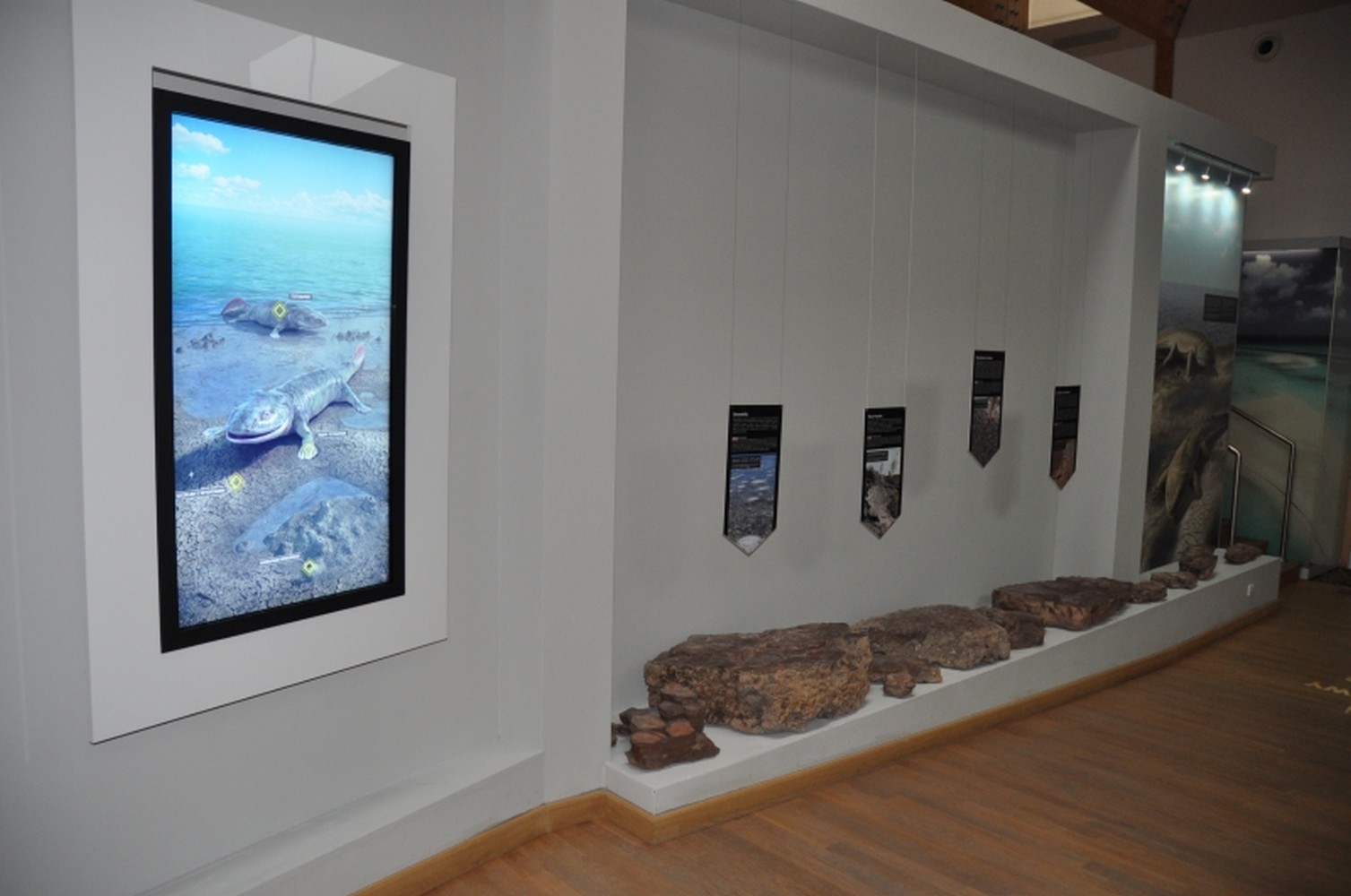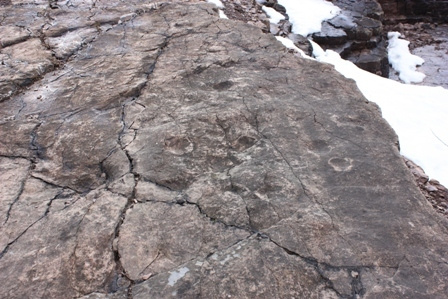The quarry in Zachełm became famous, when in 2010, the prestige “Nature” magazine published an article about a sensational paleontological discovery.

Here, in the surface of a shoal of dolomites, in the south-eastern part of the quarry, an accumulation of fossil footprints in the form of paths imprinted in the limestone silt were found. Those footprints date back 395 million years, when the area of the quarry was covered by a warm sea. It was from there that the first tetrapods came ashore. The found footprints have radically changed the perception of the emergence of vertebrates on land, as until then it was believed that it took place 18 million years later from freshwater, not from the sea. The time in which tetrapods came ashore was determined based on the conodonts, jaws of primitive chordates (the fossils that precisely indicate the age of the rock, because of a short period of the species occurrence) found in the area.

The traces were examined and described by scientists from the Polish Geological Institute and the University of Warsaw, and also graduates of the Kielce geological technical college: Grzegorz Niedźwiedzki and Piotr Szrek. Dr. Zbigniew Złonkiewicz from the Kielce branch of PGI, who in 2004 became interested in unusual traces of animals resembling dinosaurs, also had a significant influence on the development and interpretation of the discovery. The conclusions of the research were published in January 2010 in one of the most prestigious science magazines - “Nature”.
Currently, some of the traces were secured, but some of them can still be seen in their natural environment on the southern wall of the quarry (the area is marked with an information board). Thanks to the findings from Zachełmie, we now know that tetrapods moved similarly to salamanders - on all fours with paws equipped with well-developed fingers, Rocks that are found around the discovery can show a lot about the environment in which tetrapods came ashore. It is known that it was a very shallow sea reservoir, which at low tide exposed the silt-covered bottom a few hundred kilometers from the shore. This area dried up under the influence of the sunrays, creating the so-called drying cracks, which can still be seen in a petrified form in the western part of the quarry. In the rock block, next to the footprints themselves, you can find traces of crustaceans, which probably served as food for the first tetrapods. It is very probable that tetrapods came ashore while following the small creatures.
Although tetrapod footprints are a unique and undoubtedly the most valuable part of the quarry, it is not its only geological curiosity. As early as in 1987 a part of the northern side of it was protected as a natural monument (it can be seen close to the entrance to the quarry, on the left side of the road). It is one of several geological exposures in Poland that showcase in such exact way the inconsistency in the arrangement of rock layers. Grey dolomites from the Middle Devonian period (395 million years) are sloped at a 45 degree angle. Over the rocks there are almost perfectly horizontal layers of red sandstone and mudstone that deposited there in Permian and Triassic (approx. 250 - 200 million years ago). It is also worth mentioning, that there is a lot of karst forms (chimneys and funnels) in the north-eastern side of the excavation, as well as hematite - cherry iron oxide.
